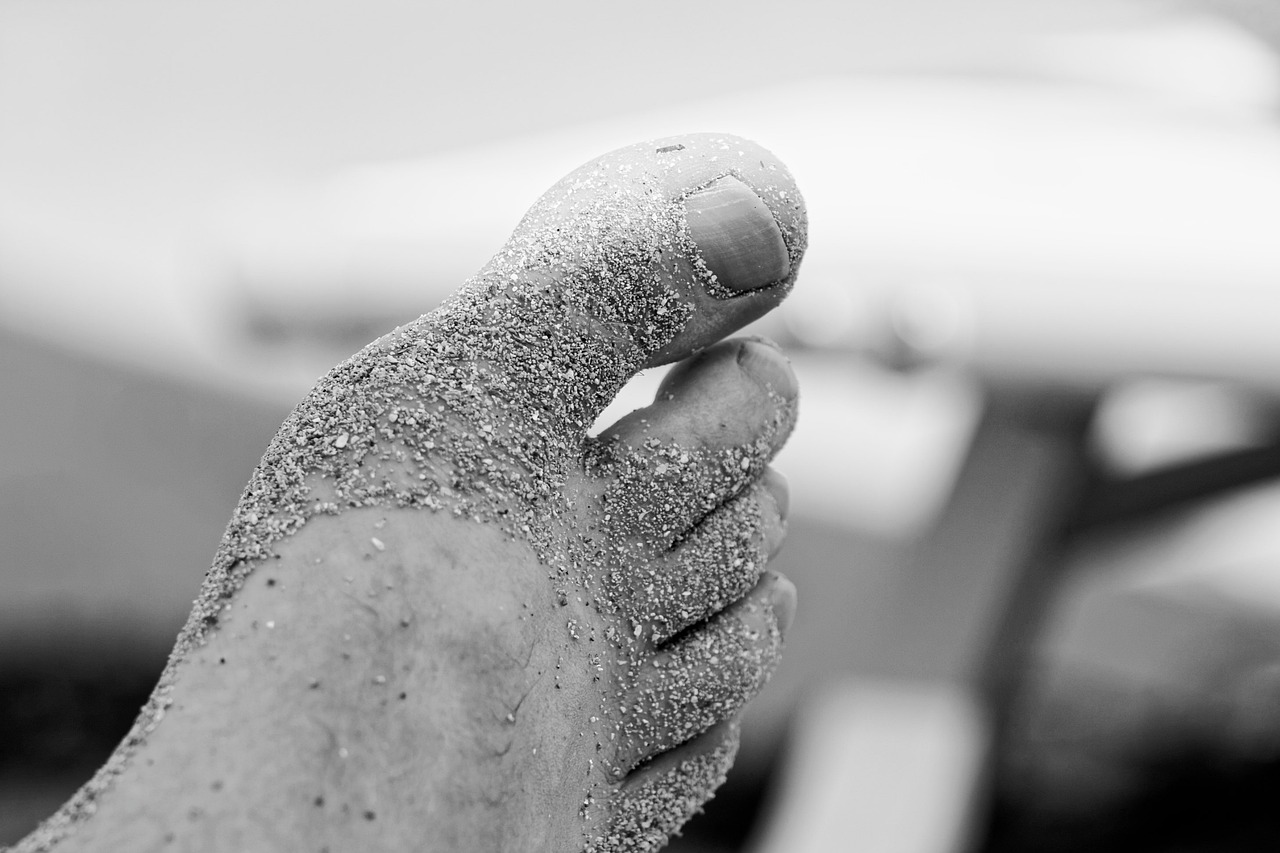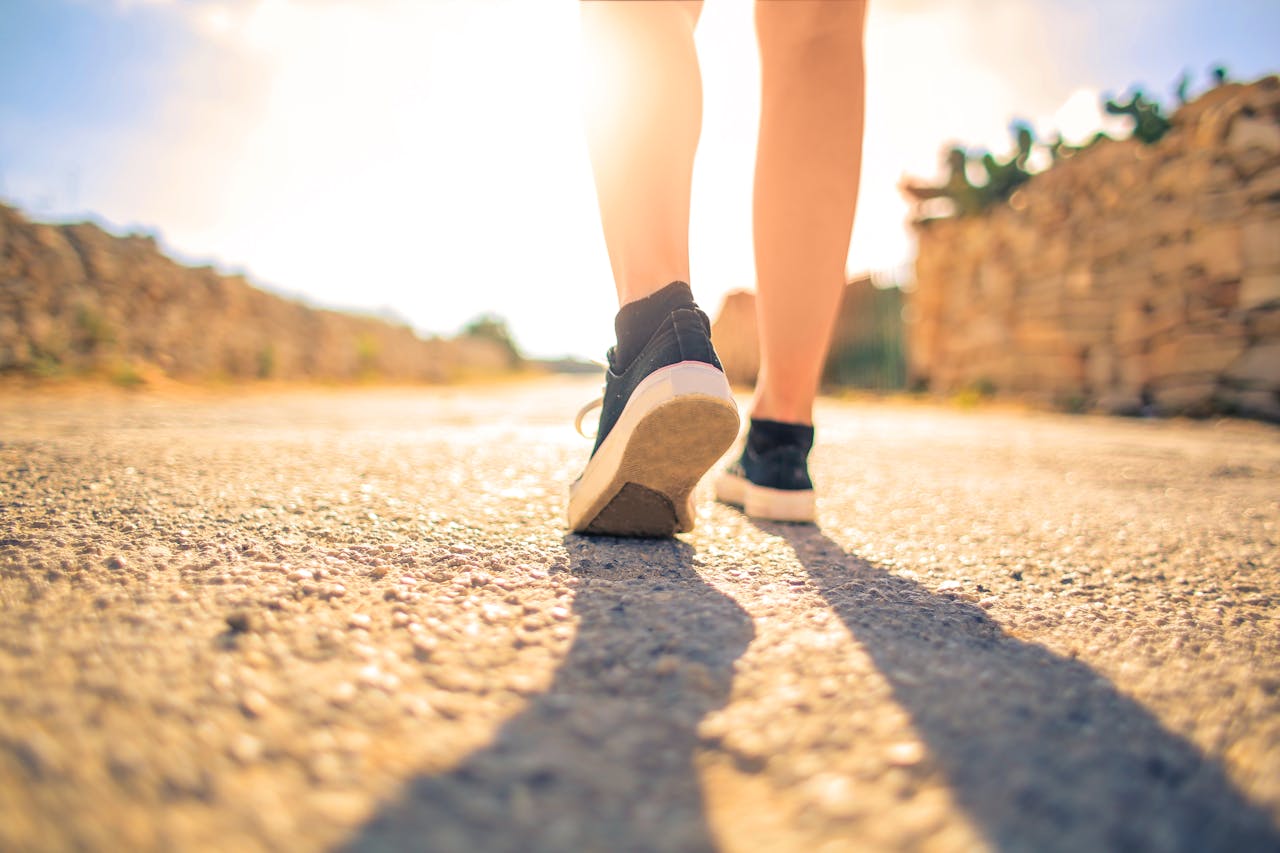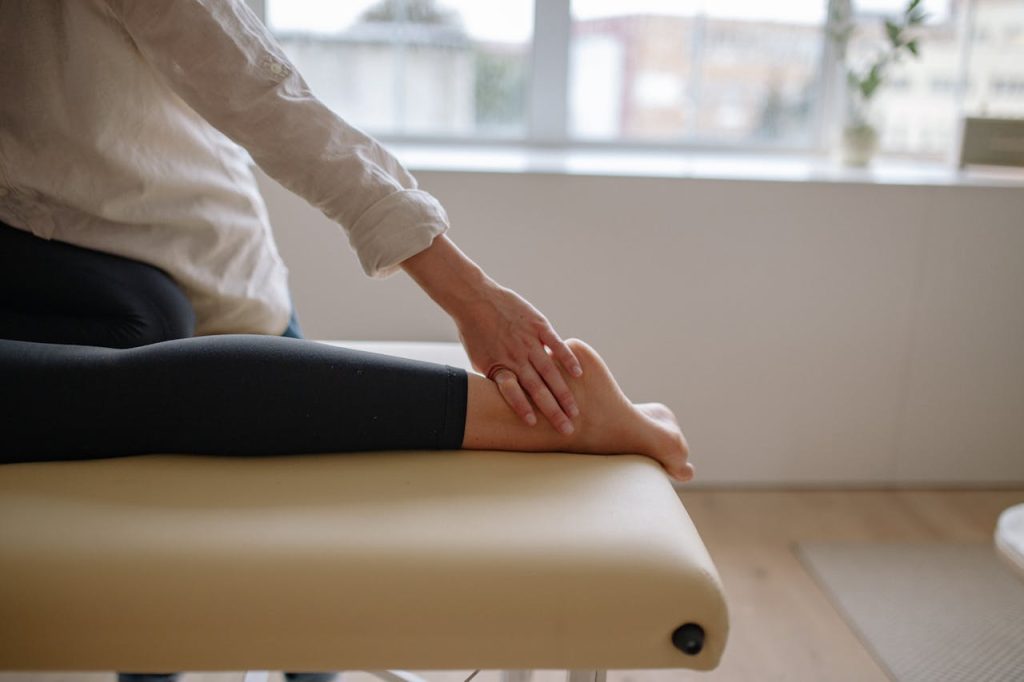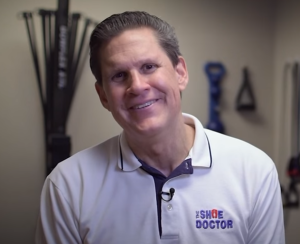A 3D foot scan can help pick the perfect shoes by providing a precise footprint of your foot’s length, width, and arch shape. When you have this information, you can pair shoe brands and styles to your specific foot, not a size on a chart. For those who frequently experience pressure points or blisters, having insight into your foot’s true shape can reveal which shoes are likely to fit better. Brands are now leveraging this scan data to recommend styles that align with your foot’s shape. Whether in-store or online, you’re more likely to feel good when you use a scan. The following section details how these scans function and what to anticipate when employing one for shoe shopping.
Key Takeaways
- 3D foot scans take accurate measurements of your specific foot shape, providing a more accurate size than conventional sizing.
- Your scan data can be used to recommend shoes that are best suited for your foot shape and size. This enhances comfort, minimizes injury risk, and caters to special requirements.
- Precision scans reduce returns, save you time, and make you happier when buying shoes.
- Decoding scan results with trained fit experts means you select shoes that suit your measurements and lifestyle.
- When shoe construction, materials, and support are considered along with scan data, better long-term fit and comfort result.
- You should inquire about data privacy and consent with scanning locations.

The Sizing Dilemma
Standard shoe sizing has been a problem since day one, anywhere you live. It’s guesswork and a bad fit galore. Here are some common issues people face with traditional shoe sizing methods: Your feet are not defined merely by length and width. There are tons of little things that vary per individual. Say you have long toes, wide forefeet, or high arches, while your friend has narrow heels or a low arch. Most shoe stores only measure those two basic points — length and width — ignoring many of the factors that count for comfort. That’s why shoes in your size can still feel pinchy in one place or baggy in another, leading to a need for a more precise fit process.
- Sizing only considers length and width, while it discounts arch height, toe shape, and heel width.
- The dreaded sizing issue—a size can fit differently between brands or even styles within the same brand.
- Big fit differences in ‘same size’ shoes.
- Most sizing charts ignore the fact that your foot shape changes when you are standing or walking.
- Online shoe purchases have a high rate of returns, mostly because of a bad fit.
A mis-sized shoe does more than give you blisters. If your shoes don’t fit right, you’ll hurt, blister, or even alter your gait. Eventually, this can turn into big issues such as sore joints or injuries. If you’re a runner, walker, hiker, or just someone who spends a lot of time standing, a bad fit can drag down your performance and make life more difficult. The implications extend well beyond comfort; they influence your health and enjoyment of movement, making the use of a 3D foot scanner essential for achieving the perfect fit.
Few folk realize how frequent these sizing problems are. One study found that 40% of women’s running shoes were not the size labeled, demonstrating that even in one style group, you can’t trust fit. Online stores see return rates as high as 50% for shoes, mostly because of sizing issues. The existing fit system is antiquated. Custom fits generated from 3D scans, AI, or machine learning provide a glimmer of hope, but for most, a shoe molded for their unique foot shape is still a novel concept.
To address these challenges, services like the 3D foot scanning service can provide accurate foot measurements, ensuring that runners find the right footwear for their specific needs. With trained outfitters available to guide you through the fitting shoe process, achieving your future running goals becomes more attainable than ever.
What is 3D Foot Scanning?
3D foot scanning is a way to digitally capture the shape and size of your feet, providing a perfect fit for your unique foot shape. Rather than old-school tape measures or foam boxes, 3D scanners utilize cutting-edge technology sensors to create a digital replica of your foot in seconds. This profile is much more comprehensive than conventional methods, capturing all curves, arches, and pressure points. With this information, you have an accurate and individual digital footprint of your feet, aiding the search for specific footwear products such as training shoes and running shoes. Such scans are now commonplace at neighborhood podiatry offices and even occasionally via mobile apps, rendering them quite accessible.
The Technology
3D foot scanners utilize infrared sensors or structured light to scan the surface of your foot, capturing thousands of data points to construct a complete 3D foot profile of your unique foot shape. Most 3D scanners capture a static image of your foot while you stand still. However, some advanced systems can also record movement or integrate pressure data as you walk, providing insight into how your foot behaves dynamically. Most newer scanners include a pressure plate, which indicates where your foot presses down the most, aiding in the gait analysis process. This pressure data helps identify problem areas, such as high arches or flat feet, directing the selection of specific footwear products. The scan results can be transmitted directly to shoemakers, allowing designers to create new footwear custom-matched to your feet for a perfect fit.
The Process
- Step onto the scanner, barefoot, and stand still.
- The scanner collects a 3D image, usually in less than a minute.
- If equipped, a pressure plate measures where your foot applies force.
- Results are reviewed, and a digital profile is created.
- Optionally, gait analysis can come next, where your walk is analyzed.
The full scan doesn’t take long, with most folks in and out within a few minutes. This easy, precise measuring process ensures accurate foot measurements, so you don’t have to guesstimate. For a perfect fit, several clinics recommend a gait analysis appointment post-scan to examine how your feet move while walking.
The Data
Data Collected | How It Helps You |
Foot length & width | Matches shoe size closely |
Arch height | Pick shoes for arch support |
Pressure points | Spots high-stress areas |
Foot volume | Guides shoe depth and shape |
Toe angles | Selects the toe box width |
These metrics, including precise measurements from a 3D foot scanner, then inform recommended shoes that fit your unique foot shape. Understanding your arch height and pressure points is crucial, as these factors influence comfort and injury risk, especially for runners needing custom insoles.
How a 3D Foot Scan Helps
With a 3D foot scan, you receive a complete picture of your unique feet, encompassing not just length or width but the entire contour and its dynamics. This fast scan, typically taking seconds, can utilize a phone or a special scanner. It provides you with a digital map of your foot, giving both you and trained outfitters the insights to make intelligent selections about the perfect fit for shoes or insoles.
- Your scan can then match you with brands or shoe shapes that fit your feet best.
- You are able to receive guidance on which shoe models are suitable for your foot requirements.
- You will find out which styles assist with problems like flat feet or high arches.
- You get shoe picks based on your everyday or athletic activities.
- We can craft custom insoles to support your foot shape and alleviate pain.
1. Unmatched Precision
A 3D foot scan outperforms traditional measuring techniques by providing precise measurements of your foot’s length, width, arch, and contours, ensuring a perfect fit for your unique foot shape. This accuracy is particularly beneficial for runners, as it guarantees that the shoes you choose will feel better and perform better, especially during long runs. With every scan delivering an accurate footprint of your foot anatomy, shoe companies can effectively match you with the ideal footwear that meets your running goals.
2. Personalized Recommendations
When you take a 3D foot scan, those results are used to recommend shoes that provide a perfect fit for your unique feet and size. These selections can shift if you’re on your feet a lot, jog, or require work shoes. Our trained outfitters can leverage your scan to guide you towards different shoe categories, allowing you to experiment with new running shoes that suit your running style. You’re not limited by a single brand or style.
3. Beyond Sizing
More than just size, a 3D foot scan checks for how your foot moves and reveals your unique foot shape, including your arch type and any signs of over- or under-pronation. This knowledge allows you to identify potential sources of foot pain or injury and choose the perfect fit for your running goals and lifestyle. A 3D foot scanning service helps you find shoes that fit how you walk, not merely your foot size.
4. Reduced Returns
When shoes fit right, especially with the help of a 3D foot scanner, you ship back fewer. This saves time, money, and hassle while ensuring a perfect fit for your unique feet. Retailers benefit as well, with fewer returns leading to less waste. Delighted buyers are more confident to purchase online or in-store, knowing they’ve achieved the right fit the first time around.
5. Injury Prevention
A scan can highlight problems such as bunions, flat feet, or abnormal gait, providing valuable insights for local runners. Fit specialists leverage this data from the 3D foot scanning service to fabricate personalized orthotics or recommend running shoes that alleviate discomfort and reduce the likelihood of injury, ensuring a perfect fit.
A Scan Is Not Enough
3D foot scans can provide a wealth of information—length, width, arch height, heel width, and even instep volume. However, a scan alone is not sufficient for achieving the perfect fit. Shoe comfort encompasses more than just metrics; various factors influence your experience. Consider the fitting shoe process alongside your scan results for optimal comfort.
Factor | Why It Matters |
Foot scan accuracy | Validity of measurements (within 1mm difference) |
Scan time | Ideal stand-still < 5 seconds for user comfort |
Shoe construction | Shape, materials, and build affect fit |
Brand sizing | Sizes and fits vary even at the same measurements |
Human expertise | Experience helps match your needs to the right model |
Pronation/gait | Affects support, not covered in static scans |
Personal preference | Comfort and style are individual, not just numbers |
Data Interpretation
Scanning you in 3D is just the beginning. If a scanner claims extreme precision—such as 0.1mm accuracy—it’s worth double-checking. Consumer and clinical-grade scanners typically deliver measurements accurate to within about 1mm. Any large discrepancy between scans or tools may indicate calibration issues. Any scan ought to register with other tools to within 1mm. If the gap is larger, the answer may be off.
There is more to your foot than its length and width. Varied shapes, high arches, wide forefoots, and narrow heels deserve shoes with components designed for them. For instance, a high-arched foot might require additional support beneath the arch, while a wider forefoot might need a larger toe box.
A scan isn’t enough. Talking to a trained outfitter is key. They know how to read scan data, spot mismatches, and assist you in understanding what the results mean. Bring questions about your scan and shoe preferences. This makes the choice comprehensible.
Shoe Construction
When a shoe is made, it alters the fit, even though the digits appear ideal. Materials count—soft mesh is a different sensation from stiff leather. Cushioning and arch support alter the impact and motion of your feet.
Brand sizing is not universal. Size 42 in one brand could be tight or loose in another. Just scanning isn’t enough. Try shoe models that fit your foot’s shape, not just the number on the tag.
Every so often, two pairs of shoes with the same size and width will feel different if their internal construction varies.
Human Expertise
Fit experts provide a dimension no scan can give. They identify trends, customize suggestions, and understand which labels fit every toe. Their recommendation addresses what a scan overlooks, such as the mechanics of your foot during walking or running.
Your feedback matters. Only you can talk about your comfort level or how a shoe feels with wear. Trust fit experts. They combine your scan information, your input, and their expertise for optimal fit.

Your Data and Privacy
Foot scans capture images and measurements of your feet, providing a perfect fit for your footwear needs. These scans represent personal data, and it’s natural to want to know how they are treated. When you use a 3D foot scanning service, your data could include more than just the scan; it can encompass any other information you provide, such as your name or contact details. Some services use cookies on their sites, which are tiny files that monitor your site usage. Function cookies remember your settings to enhance your experience, while analytics cookies help companies observe how users interact with their sites by gathering data anonymously. Advertising cookies go even further, creating a profile of your interests to present you with ads you might enjoy, ultimately helping you find the new running shoes that fit your unique needs. Strictly necessary cookies enable core functionality such as security, network management, and accessibility.
Data security is crucial in protecting your personal data from abuse or accidental leaks. Trustworthy scanning services, especially those offering a 3D foot scanner, employ encryption, secure servers, and limited staff access to safeguard your data. However, not every venue provides this level of security, so it’s important to inquire about the mechanisms they have established to protect your data privacy. If you’re using an online scanner, verify that the site has a transparent privacy policy and confirm that the site is secure by looking for “https” in the address bar. If you visit a store, check to see if they inform you about how your scan data is retained or if it is shared with any outside entities. Sites that earn your trust will keep your information locked down and use your data solely for the purpose of assisting you in selecting your perfect shoe.
Informed consent is your prerogative. Before a scan, you should be informed about what data is being collected, the reasons for its necessity, and the potential recipients of this information. Don’t hesitate to inquire, as quality providers will inform you about how your data is used and allow you to opt in to what you consent to share. They should also provide a means to access, correct, or delete your data if desired. Ultimately, you decide what happens with your information, ensuring that it aligns with your future running goals and personal preferences.
The Future of Footwear
3D scanning is going to revolutionize how you shop for shoes. With a perfect fit in mind, better comfort, and new ways to design shoes, it works by taking a detailed map of your feet, capturing millions of points to create a 3D model. This process isn’t only about length and width; scans examine arches, curves, and even pressure points. Makers could take these scans and use them to construct shoes that fit your unique feet, not the generic foot shape.
Phase-shift structured light will usher in the next wave of 3D scanning. It’s hands-off, sweeping light patterns across your foot and constructing a model in seconds. You receive immediate feedback on a monitor, indicating what shoe shapes suit you, allowing brands to recommend shoes not simply by size but by your movement and specific footwear products.
The 3D foot scanner technology will allow for 3D-printed flighted replicas from your scan, helping trial shoes before they even reach the store. This reduces errors and expedites the fitting shoe process. Brands won’t require as many test drives with actual users; they can verify the fit with your digital foot model, producing shoes that feel right the first time.
Designers can even tap into a vault of 3D foot data, organized by gender, foot size, age, and even country. If you reside in an area where the populace tends to have broader or flatter feet, manufacturers can create an improved fit for your specific region. It’s in this way that you discover shoes that suit your running style, wherever you happen to be.
Tech is going to be a bigger part of shoes. You can anticipate seeing more apps and stores providing 3D scans. Pretty soon, you’ll step on a scanner or hold your phone camera up for a quick scan. These outcomes will define the types of new running shoes you purchase, whether online or in a store.
Keep an eye on this space for more news. The industry is fast and the tools are only just getting better. By staying on top of such changes, you’ll be able to make smarter decisions and score shoes that fit just right for your future running goals.
Conclusion
With a 3D foot scan, you get a direct glimpse of your foot’s particular shape and stature. You get data, not estimates, so choosing shoes becomes easy. Stores then use these scans to pair you with shoes that fit your foot, not just your size. You still must try them on, walk, and see how they feel. Scans direct, but your comfort is king. A lot of the big brands are now using this tech, and you’ll find it in stores or via certain apps. For those who desire fewer returns and sore feet, this tool assists immensely. You want shoes that fit your real foot. Try the 3D scan next time you shop. Your feet will thank you.
Frequently Asked Questions
Can a 3D foot scan help you find better-fitting shoes?
Yes. A 3D foot scanner provides accurate foot measurements, ensuring you select running shoes that offer a perfect fit for your unique feet, which significantly reduces discomfort.
What information does a 3D foot scan provide?
A 3D foot scan, part of the gait analysis process, reveals your foot length, width, arch height, and pressure points, helping you find a perfect fit for your unique foot shape.
Is a 3D foot scan accurate for everyone?
Yes. The 3D foot scanning service is precise for almost everyone, offering a unique foot shape profile that provides accurate measurements for the perfect fit in footwear.
Do you still need to try shoes on after a 3D scan?
Yes, a scan from a 3D foot scanner is a great guide, but trying on shoes is key for local runners. In-person fit testing ensures you find the perfect fit for your unique foot shape.
Is your personal data safe with 3D foot scans?
Trusted companies shield your information with strong privacy policies, ensuring that your 3D foot scanning service data is securely stored and used.
Can 3D foot scanning help with foot pain?
Yes. By utilizing a 3D foot scanner to find pressure points and unique foot features, you can select the perfect fit shoes that support your feet and potentially reduce pain.
Will 3D foot scanning become more common in the future?
Yes. With advancements in technology, the 3D foot scanning service is expanding to reach more people across the globe, assisting folks in finding the perfect fit for their unique foot shape!
Struggling With Foot, Back, or Knee Pain? Find Answers With 3D Foot Mapping at The Shoe Doctor.
If you deal with constant back or knee pain, your feet could be the real source of the problem. Even small misalignments in your foot structure can throw off your entire body’s balance, putting strain on your joints and muscles. At The Shoe Doctor, we use advanced 3D foot mapping to pinpoint these imbalances with incredible precision.
Our detailed foot-mapping process captures how you stand, move, and distribute pressure, allowing us to create truly custom orthotics that correct alignment, relieve pressure points, and restore natural movement. With more than 20 years of experience, Russell combines cutting-edge technology with expert craftsmanship to design orthotics that do more than add comfort—they help prevent pain from returning.
Through our partnership with the Spine & Injury Medical Center in San Jose, we take a full-body approach to relief, ensuring your posture, gait, and foot mechanics all work together for lasting results.
If you’re in the South Bay Area, book your free consultation today. Let The Shoe Doctor use 3D foot mapping to help you move comfortably and confidently again.
Disclaimer
The materials available on this website are for informational and entertainment purposes only and are not intended to provide medical advice. You should contact your doctor for advice concerning any particular issue or problem. You should not act or refrain from acting based on any content included in this site without seeking medical or other professional advice. The information presented on this website may not reflect the most current medical developments. No action should be taken in reliance on the information contained on this website, and we disclaim all liability for actions taken or not taken based on any or all of the contents of this site to the fullest extent permitted by law.


